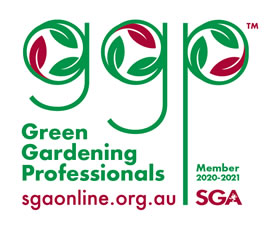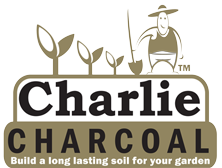| item(s), Total: $0.00 View Cart |
| Shopping cart is empty. |
Mulch - What, How, Why!

Mulch is essential in our hot Perth summers to protect the roots of plants, and to conserve precious moisture levels in the soil.
There are three types of mulches: Feeding mulches (such as pea straw, sugar cane mulch, lupin mulch, lucerne, our 3 way mixes); Woody mulch (such as our Economulch, Forest Mulch and recycled tree prunings) and Permanent mulch (such as pebbles and stones).
Feeding mulches
These break down rapidly to feed the soil, and need topping up frequently. These are best suited for fruit trees, vegetable gardens and flowering plants which tend to be 'hungry'.
For vegie gardens, straw and pea straw (pictured) are usually a great way to go. Straw breaks down quicker than the woodier mulch, adding valuable organic matter to the soil. Which to use (straw or pea straw) often comes down to a personal preference. Peas, being a nitrogen fixing plant, return more of this element to the soil when their material breaks down. However, if you are using our soils, and improving your soils organically from season to season, the extra nitrogen will have a minimal effect. The decision often comes down to cost. Straw is cheaper than pea straw. There is also the option of Lucerne, which is only seasonally available. However, this is more expensive again and the benefits of the nitrogen negligible if you are doing other things to improve your soil.Lupin mulch is also nice to use - it is finely shredded, and easy to apply from a bag. (We stock it in 42L bags, or you can order a large bulkabag delivered to your home.)
Woody mulches
These are better suited to deeper rooted hardy plants like shrubs and trees. See our range of mulches here.
One of the best general purpose mulches for shrubs, trees, fruit trees, etc. is the coarse wood chip/tree pruning mulch. This is available fairly cheaply, so you can afford to put it down nice and thick. 10 – 15 cms is usually a good depth. This much woody mulch put down over a layer of moist compost produces a fantastic soil over time; usually full of worms!
If you really prefer the look of darker mulch, we do carry ‘Economulch’. This too is made from tree waste, but has gone through an extra grinding and composting process so particles are smaller and more even, and the ageing process means it is a uniform brown colour. It will fade over time, as all mulches do. Economulch is made to Australian Standard AS4454 to ensure consistent quality. It is processed to eliminate weed seeds, pathogens and disease, including dieback.
A concern with using woodier mulch is ‘nitrogen drawdown’. Basically, in the breakdown process of the mulch, the microbes fuel up on nitrogen; often from the soil, meaning that it isn’t available to plants. However, once this part of the cycle is over, the microbe population dies down, and releases the nitrogen into the soil once more. If you are particularly concerned about nitrogen drawdown, simply sprinkle a light layer of blood and bone on the soil, underneath the mulch. This will feed up the microbes and your plants won’t suffer.
Coarse mulches are preferable - their 'open' structure allows for easy water penetration down to the soil. Finer mulches tend to matt together and can absorb water themselves rather than allowing water to penetrate through.
At GLSC we make 3way mulch - a blend of woody mulch, compost and manure - so this is a good option if you're looking to feed up perennial plants and fruit trees.
Permanent mulches
These are mainly used for landscaping effects, and include things like pebbles, crushed brick or stone, etc. They do help hold moisture in the soil, and last forever! They are best suited to plants which don't drop many leaves (eg. succulents).
General Tips for Mulching:
The best mulches are light coloured (to reflect heat rather than absorb it); and are made from large particles. Coarse textured mulches allow water to easily penetrate between the gaps and don’t tend to mat together and restrict water penetration.
Always water your soil well BEFORE putting down mulch (and use a liquid soil wetter if your water is hydrophobic).
Mulch is best applied at the end of winter, or the beginning of spring while the ground is still reasonably moist and cool, and before the hot, drying winds of summer are upon us.
If you are mulching over weeds, a layer of wet newspaper (at least 10 sheets thick) forms a great barrier. Soak the newspaper in a wheel barrow or similar before laying it in overlapping sections on the ground, then apply your mulch straight on top. Should you need to plant into it, simply puncture the layer of paper and plant away!
Please note we do NOT carry or recommend peat mulch. Peat is extracted from wetland areas and is a non-renewable resource. It is also interesting to note that some of the cheaper black mulches are DYED – often with a petrochemical based product (diesel has been known to be used!). Not particularly environmentally friendly either! So perhaps we need to break with the tradition of using ‘black mulch’ for a product that both does the job better, is longer lasting, and is less expensive costwise and environmentally… it just isn’t black!
Remember to keep mulch a few centimeters away from the stems of your plants to allow air flow. Mulching too close or covering up stems may result in rotting.
Get Growing Today!
Come on in!
Pick up bags or bulk product bring your trailer (or use one of ours) Opening hours: 8.30 - 4.00 Monday - Saturday (closed Sunday)
Shop Online - We Deliver
24/7 convenient & secure online shopping or support your local independent retail outlet
Get Growing
We guarantee our products. Ask our friendly staff for help & advice ~ we're here to help you achieve the garden of your dreams.
























